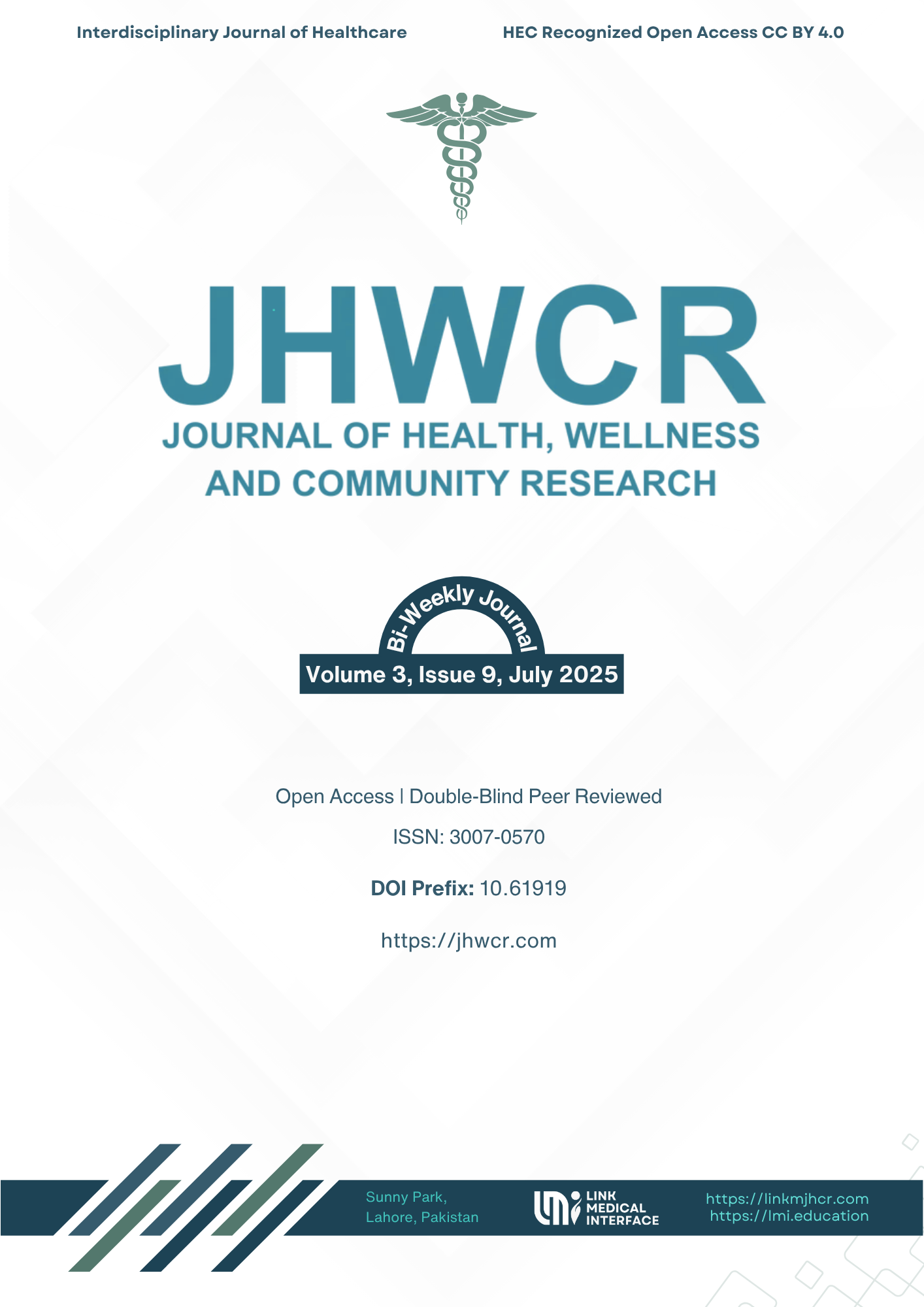Association of Repetitive Gripping Motion and Trigger Finger in Construction Workers
DOI:
https://doi.org/10.61919/xc0c7738Keywords:
Trigger finger, repetitive gripping, construction workers, Hand 20 test, musculoskeletal disorders, occupational health.Abstract
Background: Trigger finger, or stenosing tenosynovitis, is a common hand disorder characterized by painful locking or catching of the fingers due to inflammation and narrowing of the flexor tendon sheath. Occupations involving repetitive hand use, such as construction work, impose significant mechanical stress on the tendons and may predispose individuals to trigger finger, yet this occupational risk remains under-investigated. Objective: To evaluate the association between repetitive gripping motions and the prevalence and severity of trigger finger among construction workers. Methods: A cross-sectional observational study was conducted among 185 construction workers from three sites in Lahore, Pakistan, between July and December 2024. Participants were assessed using the Hand 20 test for functional disability, the Quinnell grading system for severity, and the Visual Analog Scale (VAS) for pain. Repetitive gripping frequency was self-reported and categorized into three exposure groups. Logistic regression was used to determine odds ratios (OR) while adjusting for confounders. Results: Trigger finger symptoms were reported in 29.7% of participants. Those performing >30 gripping motions/day had significantly higher Hand 20 scores (mean = 24.3), greater pain (VAS = 3.9), and an adjusted OR of 6.98 (95% CI: 2.05–23.80) for trigger finger compared to the <10/day group (p < 0.001). Diabetes and increasing age were also independent risk factors. Conclusion: High-frequency repetitive gripping is significantly associated with increased risk and severity of trigger finger among construction workers, warranting targeted ergonomic and preventive interventions in labor-intensive occupations.
Downloads
Published
Issue
Section
License
Copyright (c) 2025 Amina Shahzadi, Subayyal Iftikhar, Aima Rashad, Namra Jamshad (Author)

This work is licensed under a Creative Commons Attribution 4.0 International License.


